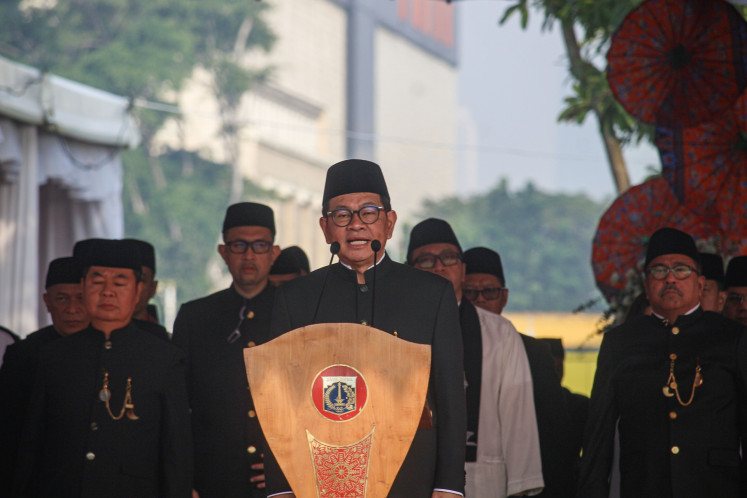Popular Reads
Top Results
Can't find what you're looking for?
View all search resultsPopular Reads
Top Results
Can't find what you're looking for?
View all search resultsPoso power plant expected to boost C. Sulawesi’s energy
State-run power company PT PLN’s south, southeast and west Sulawesi region (Sultanbatara) has again received additional power from the 195-megawatt (MW) Poso hydroelectric power plant (PLTA), launched recently in Poso regency, Central Sulawesi
Change text size
Gift Premium Articles
to Anyone

S
tate-run power company PT PLN’s south, southeast and west Sulawesi region (Sultanbatara) has again received additional power from the 195-megawatt (MW) Poso hydroelectric power plant (PLTA), launched recently in Poso regency, Central Sulawesi.
However, PLN has not yet fully utilized power produced by the Poso PLTA because the transmission network from Poso to the Central Sulawesi capital of Palu has not yet been completed.
“The transmission network from Poso to Palu is currently being installed. We expect it to be completed by mid 2013, when Central Sulawesi will be connected to the South and West Sulawesi interconnection power system. Upon completion, the output produced by the Poso PLTA can benefit residents in Palu and surrounding areas,” said PLN managing director Nur Pamudji in Sulewana, North Pamona district in Poso regency.
Residents in Tentena and surrounding areas have benefitted power from the Poso PLTA, yet still below optimal levels due to the low capacity of the main transformer in Poso.
The Poso PLTA began supplying power to PLN Sultanbatara earlier this month in a 35-MW trial run while waiting for the completion of the transmission network.
“If the transmission network from Poso to Palu was complete, 180 MW Central Sulawesi’s power demand would be met, providing a boost of 20 percent,” Pamudji said.
So far, a large part of the power demand in Central Sulawesi is supplied by diesel-fueled power plants and private steam-driven power plants.
Pamudji acknowledged that ever since the Poso PLTA was connected to the South and West Sulawesi power grid, PLN could save up to Rp 1.2 trillion (US$133 million) by reducing its dependency on diesel-fueled power plans and buying power from the Poso PLTA at 6.7 US cents per kilowatt hour.
The Poso PLTA was built by PT Poso Energy, a subsidiary of the Kalla Group owned by former vice president Jusuf Kalla, at a cost of around Rp 4 trillion in 2005.
The sluggish completion of the project was due to unstable soil conditions, as well as concerns over the security condition in Poso.
Kalla said the entire project was completed by local experts and did not involve any foreign experts. The Poso PLTA has employed more than 2,000 workers, 70 percent of whom are local residents.
Kalla added that he intentionally built the power plant in Poso although the region was not fully safe, because he wished to develop economic conditions in the regency in particular, and Central Sulawesi in general, as well as prove that Poso was worthy of being turned into a prospective investment area.
According to him, one of the conditions investors took into consideration when determining whether to do business in an area was an adequate supply of power, in addition to security.
“Economic development must be accelerated to speed up the recovery and stabilization of security in Poso. With economic growth, jobs will be available and people will be prosperous as they will be busy working and will not have time to think radically,” said Kalla.
Next year, PT Poso Energy will build another 300-MW power plant in the same location with an investment of $600 million. The second power plant is projected to be completed in five years.









